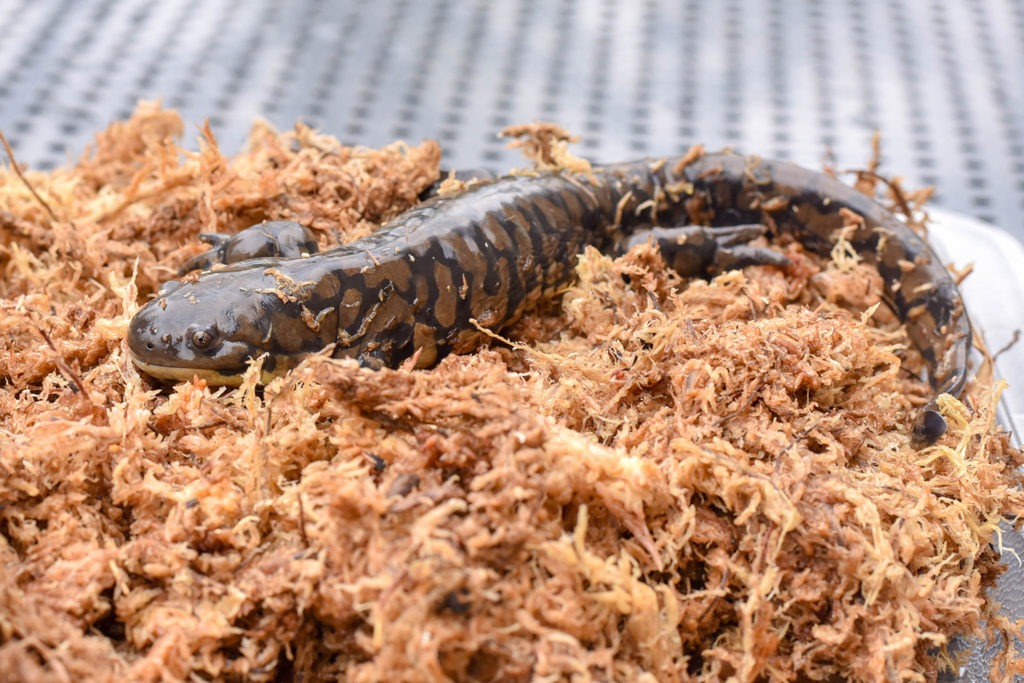Overview
“Where I live”
Eastern tiger salamanders live throughout most of the United States, southern Canada, and eastern Mexico. They range more widely than any other species of salamander in North America. They are currently endangered in Maryland.
At the Zoo, you can see tiger salamanders inside the Great Tree in the Maryland Wilderness. They are on exhibit seasonally during the warmer months of the year.
“How I live there”
Eastern tiger salamanders live in deciduous and hardwood forests near ponds, lakes, slow-moving streams, and vernal pools. They belong to a group known as “mole salamanders” and spend most of their time deep underground in burrows. At night, they emerge to feed on worms, insects, and other amphibians.
“Making my mark”
Large and thick-bodied, these salamanders can grow up to 14 inches in length, although the average size is 6 to 8 inches. They vary considerably in color and pattern, from brown to green to gray and from no markings to stripes to splotches.
Raising Young
In the spring, Eastern tiger salamanders leave their burrows and migrate to vernal pools and other bodies of water to breed. After mating, females deposit egg masses that attach to twigs and plant stems underwater. Females may deposit one or more egg masses, amounting to anywhere from 50 to 1,000 eggs. The eggs hatch after about 4 weeks and those larvae that survive will stay underwater for another several weeks while metamorphosing. They then emerge onto land and retreat underground.
“What eats me”
Salamander eggs and larvae are heavily preyed upon by a variety of animals and only a small percentage survives to adulthood. Eastern tiger salamanders that make it to adulthood are likely to live 10 years or more.
Conservation
Eastern tiger salamanders are listed as a species of least concern by the IUCN, the world’s leading conservation organization. Their overall population across a vast range is considered stable. However, in Maryland the species is considered critically endangered. This is due mainly to habitat availability or lack thereof.
Amphibians have complex life cycles that make them dependent on more than one type of habitat to survive. In the case of tiger salamanders and other pond-breeding salamanders, they need access to vernal pools and ponds as well as nearby woodlands, and they also need safe passage through the buffer zone between wetland and woodland. In Maryland, tiger salamander populations have responded poorly to loss of wetlands and surrounding buffer zones. In areas of wetlands restoration, though, there have been encouraging signs of rebound from this and other species. The Maryland Department of Natural Resources is currently working to develop a statewide conservation strategy for this and other native amphibian species.
Taxonomy
- Kingdom: Animalia
- Phylum: Chordata
- Subphylum: Vertebrata
- Class: Amphibia
- Order: Caudata
- Family: Ambystomatidae
- Genera: Ambystoma
- Species: tigrinum tigrinum


